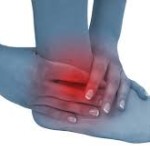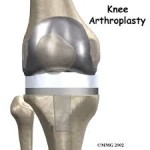If an individual requires a total hip replacement prior to the age of 60 it is likely that they will outlive the usefulness of their prosthetic joints. Unfortunately when this prosthetic is implanted it often doesn’t leave enough bone and muscle of available for a second prosthetic to be implanted once the first has outlived its usefulness. Using a resurfacing technique first will require an individual to have a second surgical procedure to implant a prosthetic device but it will also increase the likelihood that an individual will remain functional for the remainder of their lives. (3)
An arthroplastic surgery is performed under general anesthesia and can last up to several hours. During this procedure the joint is fully exposed and all of the damage bone and cartilage are either removed or reshaped. Patients can expect several days in the hospital following the procedure as well as medications to use pain and extensive physical therapy. Physical and occupational therapy are used to bring the joint back to near normal function and avoid complications.
At this time arthroplasty is usually employed as a last resort. In order to extend the functionality and abilities of the individual past the point of the demise of the prosthetic, orthopedic surgeons must weigh the risks versus benefits of implanting a total joint replacements in an individual who is younger than expected.
According to the Arthritis Foundation there are over 500,000 joint replacements performed in the United States each year. The success will depend upon the selection of the individual who requires the replacement, their overall health and their ability to follow instruction after the surgery.
As with any surgical procedure there can be complications. In an arthroplasty surgery complications can be, but are not limited to, bleeding, infection, blood clots in the legs or lungs and loosening of the prosthetic heart once it is then implanted. During surgery it is possible to injure nerves or blood vessels which results in weakness or numbness. Other risks will depend upon your specific medical conditions as well as those general risks that accompany anesthesia.
References:
(1) MayoClinic.com: Hip Resurfacing
http://www.mayoclinic.com/health/hip-resurfacing/AN01550
(2) TriRivers Surgical Associates :Understanding Joint Resurfacing
http://www.tririversortho.com/uploaded/pdf/142753_JointResurfacing.pdf
Resources:
Radiographics: Joint Arthroplasties and Prostheses
http://radiographics.rsna.org/content/23/5/1295.full
Acta Orthopaedica: C-Reactive Protein Levels After 4 types of Arthroplasty
http://www.ncbi.nlm.nih.gov/pmc/articles/PMC2823221/
American Academy of Orthopedic Surgeons: Wrist Joint Replacement
http://orthoinfo.aaos.org/topic.cfm?topic=A00019




Leave a Reply